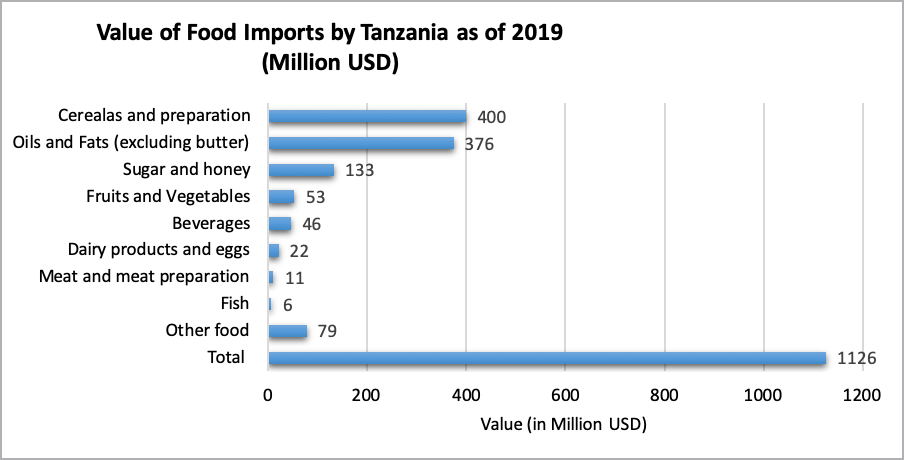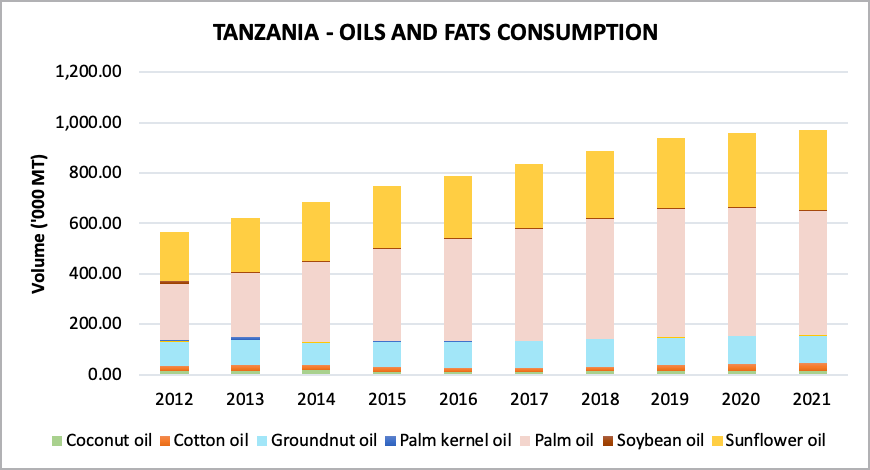
Tanzania is located in the east of the African continent, bordering Kenya, Uganda, Rwanda, Burundi, DRC, Zambia, Malawi, and Mozambique. It is home to 65 million people and has the fifth largest population of the African continent. It is the second largest economy in East Africa, and the seventh largest in the Sub Saharan region.
African Development Bank forecasted that the country’s GDP will grow at 5.6% in 2023, fuelled by the reopening of trade corridors and the tourism sector. In 2020, the World Bank declared the rise of the Tanzanian economy from low income to lower middle income. country
Agriculture is the most important economic activity in Tanzania, accounting for 50% of the total labour force, and employing 80% of the rural population. The sector contributes around 26.1% of the country’s GDP while the service and industry sectors contribute 47.6% and 28.6%, respectively.
Food crop production remains a vital economic activity for the population, particularly for the rural population, as sources of food and income. Maize, sorghum, millet, rice, wheat, beans, cassava, potatoes, and bananas are among the food crops produced in the country. Cash crops such as cashew nuts, coffee, cotton, sisal, tea, and tobacco contribute to the country’s foreign exchange earnings. The development in the agricultural sectors has been very challenging due to financial constraints, the lack of proper training, and adverse weather conditions such as drought and flood.
The tourism industry accounts for 18% of the country’s GDP and provides employment for 1.5 million Tanzanians, or 11% of the country’s labour force. In 2020, the tourism industry generated USD1 billion in revenues for the country. While this value is lower than 2019 earnings (USD2.6 billion from 1.5 million tourists[1]) due to the Covid-19 outbreak, the country is expected to collect higher revenues from the tourism industry following the post Covid-19 economic recovery in the coming years.
Tanzania relies heavily on food imports to fill the domestic demand gap. Cereal, oils and fats, sugar, and honey are the three major imports into the country. These three items account for 80% of the total country’s food import bills. Oils and fats account for 30% of that amount. While Tanzania produces sunflower, groundnut, sesame, and cottonseed, these four oilseeds only meet 47% of the total domestic requirement.

In the past three years, Tanzania has consumed close to one million MT of various oils and fats, with palm oil, sunflower oil, and groundnut oil accounting for most of it. The amount is expected to grow in tandem with the population growth and based on past trends, the country is expected to record a 5% growth annually.

Palm oil has accounted for 50% of the oils and fats consumed in the country, and the market share has grown from 39% to 51% over a period of 10 years. Tanzania gets its supply of palm oil from Indonesia, Malaysia, Kenya, and Ghana.

As for Malaysian palm oil, Tanzania is an important export destination in Africa. It ranks at number four behind, Egypt, Kenya, and Djibouti. Over the last five years, the country has imported around 200,000 to 250,000 MT of Malaysian palm oil. Palm oil remains the main component of imports to Tanzania. Palm based oleochemicals, particularly glycerine is also imported into the region.
Malaysian Palm Oil and Products Import (MT)
| 2018 | 2019 | 2020 | 2021 | 2022 | |
|---|---|---|---|---|---|
| Palm Oil | 200,759 | 217,450 | 201,760 | 204,085 | 249,169 |
| Palm-based Oleochemicals | 3,355 | 4,139 | 1,698 | 2,740 | 3,864 |
| Palm Kernel Oil | 552 | 210 | 506 | 298 | 304 |
| Finished Products | 136 | 347 | 255 | 24 | 22 |
| Other Palm Products | – | 61 | |||
| 204,802 | 222,146 | 204,219 | 207,146 | 253,420 |
Source: MPOB
Tanzania has been a steady market for Malaysian palm oil, with annual imports of over 200,000 MT. The market is mostly for refined palm olein, but the situation changed last year due to the abolishment of CPO import duty effective 1 July 2022. The import duty on CPO had been previously set at 25%, but after the revision took place, it has been observed that the ratio between crude and refined is about 55:45 in favour of crude products.
The latest development could set a new direction for Malaysian palm oil export to Tanzania whereby the market prefers CPO and CPL over refined palm oil due to the new import duty structure.
Tanzania – Refined vs Crude Palm Oil/Olein Imports (MT)
| 2018 | 2019 | 2020 | 2021 | 2022 | |
|---|---|---|---|---|---|
| Crude Palm Oil | 65,097.22 | 0.00 | 60,519.05 | ||
| Crude Palm Olein | 12,931.20 | 0.00 | 1,000.00 | 1,002.67 | 8,400.96 |
| Refined Palm Olein | 106,688.88 | 182,023.66 | 167,981.97 | 129,068.91 | 56,839.96 |
Source: MPOB
Whatever the market prefers, Malaysian palm oil will continue to support the country’s requirements. The post-Covid economic recovery is set to reignite their economy especially the tourism industry, which could be another area in which palm oil has all the advantages.

The spending on food and beverages will still be in the lead for the Tanzanian consumers, and it is set to provide further food and beverage sector growth opportunities. The country’s location and robust economic growth hold advantages, thus this market should be explored further. With the Tanzanian population forecasted to cross the 100 million mark by year 2040, it will be another big market for the Malaysian palm oil to cater to.
Prepared by Fatimah Zaharah
*Disclaimer: This document has been prepared based on information from sources believed to be reliable but we do not make any representations as to its accuracy. This document is for information only and opinion expressed may be subject to change without notice and we will not accept any responsibility and shall not be held responsible for any loss or damage arising from or in respect of any use or misuse or reliance on the contents. We reserve our right to delete or edit any information on this site at any time at our absolute discretion without giving any prior notice.
[1] Statista-Travel and Tourism Tanzania and Bank of Tanzania

